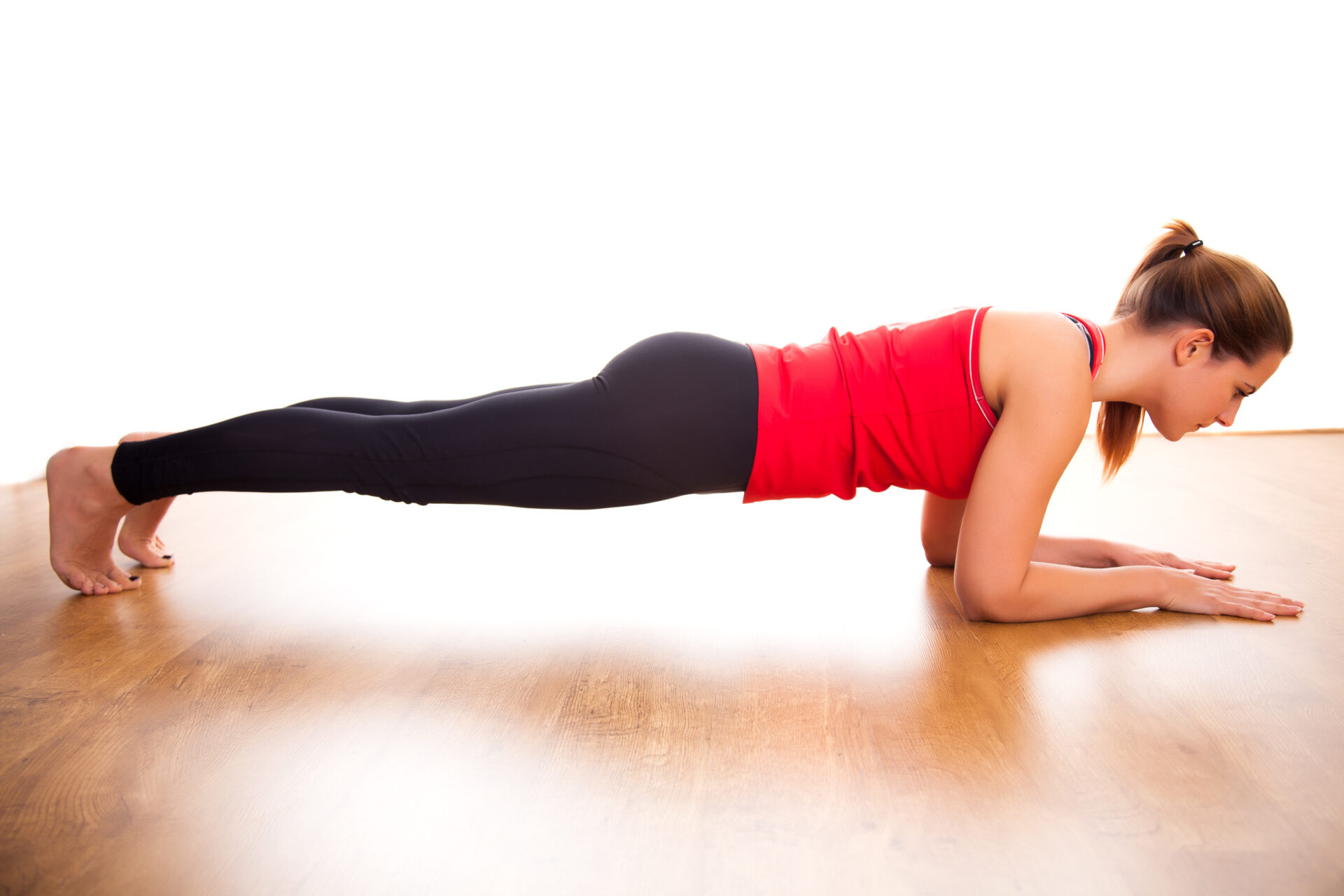The Plank – Simple Training
The plank is one of the most simple and effective ways of training your whole body in almost any space.
BENEFITS: As a compound exercise, the plank trains multiple muscle groups at once, with the added incentive that you don’t even have to move! By working the core, including the deep muscles, this simple hold will improve posture and can help to reduce chronic non-specific lower back pain as a result. From the upper-back to the feet, the muscles of the body will be stretched and engaged, and so the plank can act as an effective antidote to long periods of sitting. Although the plank is simple to perform, there are a few factors to concentrate on, and so this is also a fantastic exercise for promoting mind-body connection and taking a healthy break from stress or worries. The only requirement for performing a plank is a bit of space, and it is an exercise that can yield benefits from being performed throughout the day rather than only in a focussed training session. You could hold a plank while waiting for the kettle to boil, during TV adverts, or as a quick and invigorating break from work or study.
HOW TO: To perform the basic forearm plank, the elbows should be directly under the shoulders, with the hands and wrists in line with the elbows (although some find it more comfortable to bring the hands together). The other point of contact is the toes, and from there to your head the body should be kept in a straight line. To do this, brace the core, drawing the navel towards the spine. Gently squeeze the glutes and thighs for further stability. This is also a good time to engage the often ignored pelvic floor muscles. The aim is then to hold this position for at least thirty seconds, preventing the hips from rising or sagging. The head should also remain in line with the body. If you can hold the forearm plank for a minute or more, it’s time to start exploring the many variations, which will be covered in a separate post. Happy holding!

